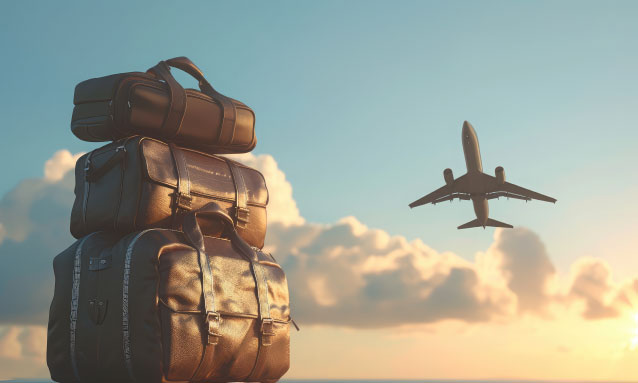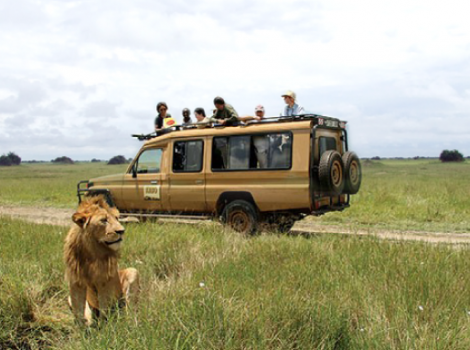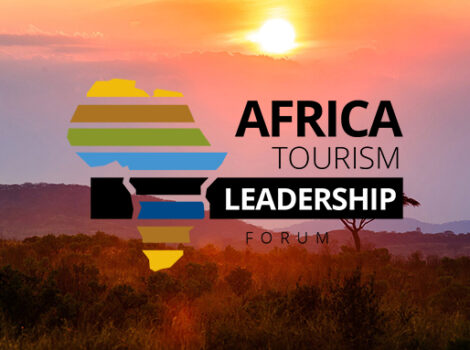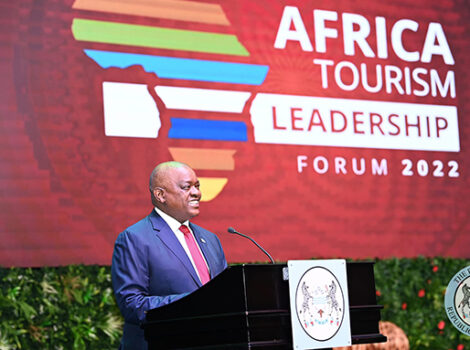
31 July 2024
Botswana, a landlocked nation in Southern Africa, boasts a unique landscape characterised by the Kalahari Desert and the lush Okavango Delta, which transforms into a vibrant animal habitat during seasonal floods.
Botswana welcomes travellers from numerous countries, offering visa-free access to citizens from 92 nations, making it a convenient destination for global tourists.
Prior to gaining independence in 1966, Botswana was a British protectorate known as Bechuanaland. The country derives its name from its predominant ethnic group, the Tswana (“Bechuana” in older variant orthography). Gaborone serves as the capital city of Botswana.
Explore Botswana with Ease – 92 Countries Enjoy Visa-Free Entry:
Americas
Antigua & Barbuda, Argentina, Bahamas, Barbados, Belize, Brazil, Canada, Chile, Costa Rica, Dominica, Dominican Republic, Grenada, Guyana, Jamaica, Mexico, Paraguay, Peru, St. Kitts and Nevis, St. Lucia, St. Vincent & the Grenadines, Trinidad & Tobago, United States of America, Uruguay, and Venezuela.
Europe
Austria, Belgium, Bulgaria, Croatia, Cyprus, Denmark, Estonia, Finland, France, Germany, Greece, Holy See, Hungary, Iceland, Ireland, Italy, Latvia, Liechtenstein, Lithuania, Luxembourg, Malta, Monaco, Netherlands, Norway & colonies, Poland, Portugal, Romania, Russia, San Marino, Slovak Republic, Spain, Sweden, Switzerland, and United Kingdom.
Africa
Gambia, Kenya, Lesotho, Malawi, Mauritius, Mozambique, Namibia, Seychelles, Sierra Leone, South Africa, Swaziland, Tanzania, Uganda, Zambia, and Zimbabwe.
Asia-Pacific
Australia, Brunei, Fiji, Hong Kong, Israel, Japan, Kiribati, Malaysia, Maldives, Nauru, New Zealand, Papua New Guinea, Samoa, Singapore, Solomon Islands, South Korea (Republic of), Tonga, Tuvalu, and Vanuatu
Central Kalahari Game Reserve
The expansive Central Kalahari Game Reserve, with its fossilised river valleys and rolling grasslands, is home to a diverse array of wildlife, including giraffes, cheetahs, brown hyenas, Kori bustards, wild dogs, Pel’s fishing owls, and numerous species of mammals, birds, reptiles, amphibians, and fish. The territory is roughly triangular, extending approximately 600 miles (965 km) from north to south and east to west. Botswana shares borders with Namibia to the west and north, Zambia and Zimbabwe to the northeast, and South Africa to the southeast and south.
Inbound Tourism Figures
During the second quarter of 2022, Botswana welcomed 248,946 international visitors, representing 88.2% of the total non-citizen arrivals (282,220), with the majority coming from the SADC sub-region.
Botswana’s Unique Attractions
Wildlife and Wilderness – Botswana is renowned for its vast wilderness areas, with safari-based tourism being a significant source of income. The country is home to Africa’s largest population of elephants, particularly in the Chobe National Park, and is the best place to spot meerkats.
Economic Pillars – While mineral extraction, especially diamond mining, dominates Botswana’s economy, tourism is a burgeoning sector, supported by conservation efforts and extensive nature reserves. Botswana is the world’s largest diamond producer, which has elevated it to a middle-income nation.
Natural Wonders – Botswana is home to the Okavango Delta, one of the Seven Natural Wonders of Africa, and the largest inland delta in the world. This UNESCO World Heritage site provides a lush oasis in the Kalahari Desert, supporting diverse wildlife. Additionally, the Makgadikgadi Pans, one of the world’s largest salt pans, transform into a vibrant ecosystem during the rainy season, attracting flamingos and other wildlife.
Cultural and Sports Achievements
Botswana won its first Olympic medal in 2012, when Nijel Amos secured a silver in the 800 meters. The country’s currency, pula, meaning “rain” or “blessing,” reflects the value of rain in this arid region. Nearly 40% of Botswana is designated as national parks and wildlife reserves, preserving its natural heritage for future generations.
Interesting Facts
- Botswana has the shortest border in the world with Zambia, measuring only 150 meters, which is crossed via the Kazungula ferry.
- The Jwaneng Diamond Mine, located in southern Botswana, is one of the richest diamond mines globally, aptly named “place of small stones.”
Sir Seretse Khama International Airport
Sir Seretse Khama International Airport (IATA: GBE, ICAO: FBSK) is located approximately 15 kilometers (9 miles) north of Gaborone’s city center. It serves as the primary international airport for Botswana’s capital.
Maun International Airport
Maun International Airport acts as the primary gateway for flights entering Botswana for safari tourism. Conveniently situated within Maun town, it is a central hub for visitors heading to Botswana’s renowned wildlife destinations.
Key Airports of Entry in Botswana
- Sir Seretse Khama International Airport
- Maun International Airport
- Kasane International Airport
- P. G. Matante International Airport
- Selebi-Phikwe Airport
- Ghanzi Airport
Airlines in Botswana
National Carrier
Air Botswana is the national flag carrier of Botswana, headquartered in Gaborone. It operates scheduled domestic and regional flights from its main hub at Sir Seretse Khama International Airport.
- Mack Air – Based in Maun, Mack Air specializes in charter flights, scenic tours, medical evacuations, and services to tourist destinations within Botswana and Southern Africa. It also provides supply flights to camps and lodges in the Okavango Delta and Kalahari regions.
- Blue Sky Airways
- Kalahari Air Services & Charter
- Moremi Air
- Northern Air
- Wilderness Air
- Debswana
- Kavango Air
- Major Blue Air
International Airlines Flying to Botswana
- Air Botswana
- Airlink
- Safair
- Cemair
- South African Airways
- British Airways
Botswana’s Economic Snapshot
GDP Growth Rate: Annual Change (2022): 5.8% (World Bank)
Gross Domestic Product: 2022: 2,035.55 crores USD (World Bank)
Economic Overview
- Governance and Management: Strong economic governance and financial management practices
- Growth Model: Historically driven by diamond mining, which is now in decline
- Poverty Reduction: Rapid decrease in poverty levels over the years
- Unemployment: High unemployment rates, particularly among the youth
- COVID-19 Impact: The pandemic significantly contracted the economy, with a slow recovery process
- Fiscal Challenges: Public sector wages have created fiscal pressures
Key Industries:
- Diamond Mining: The backbone of Botswana’s economy, diamond mining has fuelled rapid economic growth. Botswana generates about one billion dollars annually from diamond mining and ranks among the world’s top diamond producers.
Top 5 Luxury Hotels in Botswana
- Jack’s Camp
Nestled in the Makgadikgadi Pans, Jack’s Camp exudes vintage safari elegance with modern comforts. Guests can enjoy luxurious tented suites, desert wildlife adventures, and unparalleled star-gazing experiences.
- Sanctuary Chief’s Camp
Located on Chief’s Island in the Okavango Delta, this camp offers opulent pavilions with private plunge pools. Visitors can experience world-class game viewing and exclusive wildlife encounters in a pristine natural setting.
- Belmond Eagle Island Lodge
Positioned on a private island in the heart of the Okavango Delta, this lodge features stylish tented accommodations with private decks and plunge pools. Guests can enjoy helicopter safaris, mokoro excursions, and stunning sunset views.
- Khwai River Lodge
Overlooking the Khwai River in the Moremi Game Reserve, this lodge offers luxurious tents with thatched roofs and private decks. It provides exceptional wildlife viewing and cultural experiences with the local Khwai community.
- Zarafa Camp
Located in the Selinda Reserve, Zarafa Camp boasts spacious, eco-friendly tents with private plunge pools and breathtaking views of the Zibadianja Lagoon. The camp offers a blend of luxury, sustainability, and intimate wildlife encounters.
Food options
- Seswaa
A traditional dish made from beef, goat, or lamb, slow-cooked until tender, and pounded to a shredded consistency. It’s typically served with polenta or pap (a type of maize porridge).
- Pap (Bogobe)
A staple dish made from maize meal, similar to polenta, often served with meat stews, vegetables, or chakalaka (a spicy relish).
- Morogo
Wild spinach that is commonly used in traditional dishes. It can be cooked alone or mixed with other ingredients like onions and tomatoes.
- Vetkoek
Deep-fried dough balls that are crispy on the outside and soft on the inside. They can be filled with savoury ingredients like mince or enjoyed with sweet spreads. - Biltong
Air-dried cured meat, similar to beef jerky, that is a popular snack in Botswana.
Cultural Attractions
- San Culture and Traditions
- Thapong Visual Arts Centre
- Gaborone Game Reserve
- Mokolodi Nature Reserve
- Three Chiefs’ Statues
Top 5 Tourist Destinations in Botswana
- Okavango Delta – A UNESCO World Heritage site, the Okavango Delta is a lush inland delta teeming with wildlife. Visitors can explore its waterways by mokoro (dugout canoe), enjoy safari drives, and witness incredible biodiversity.
- Chobe National Park – Known for its large elephant herds, Chobe National Park offers spectacular wildlife viewing opportunities. The Chobe River attracts a variety of animals, making it ideal for boat safaris and stunning sunsets.
- Makgadikgadi Pans – These vast salt flats are remnants of an ancient lake and offer a surreal, otherworldly landscape. Visitors can experience quad biking, view unique desert wildlife, and enjoy the serenity of this expansive area.
- Moremi Game Reserve – Located in the eastern part of the Okavango Delta, Moremi Game Reserve is renowned for its rich wildlife and diverse ecosystems. It provides excellent game viewing and birdwatching opportunities, along with beautiful landscapes.
- Tsodilo Hills – A UNESCO World Heritage site, Tsodilo Hills is known for its ancient rock art, with over 4,500 paintings across the area. This sacred site offers cultural and historical insights, hiking trails, and panoramic views of the surrounding region.
Botswana has emerged as a key tourism destination in Southern Africa, primarily due to its rich wildlife resources and stunning scenic beauty. Since the 1990s, the growth of wildlife-based tourism has spurred the development of various tourism infrastructure and facilities.



